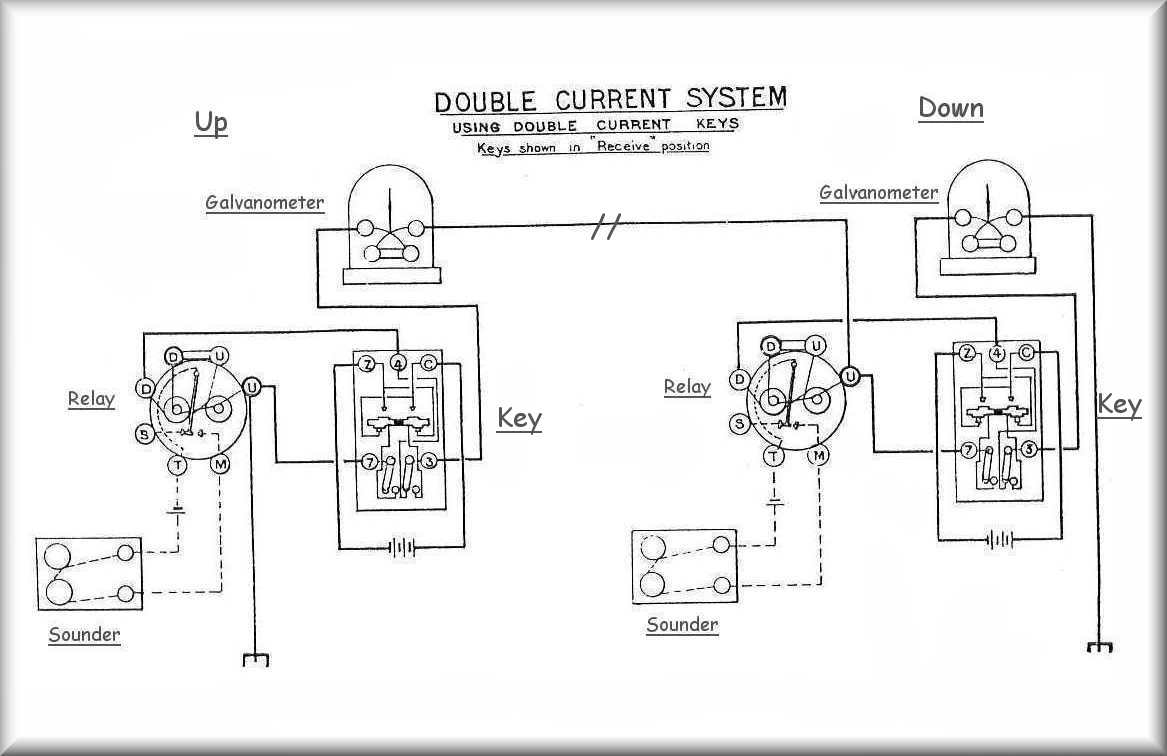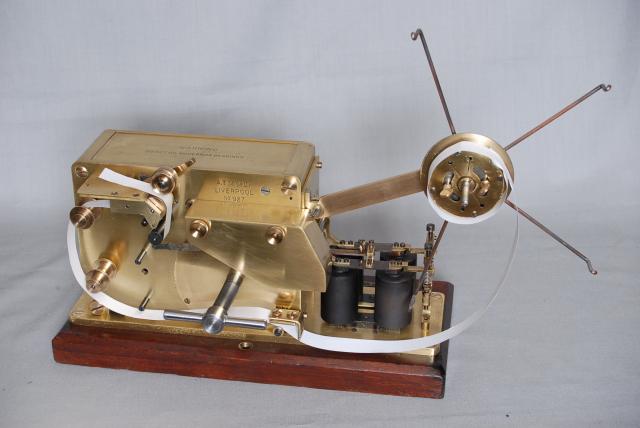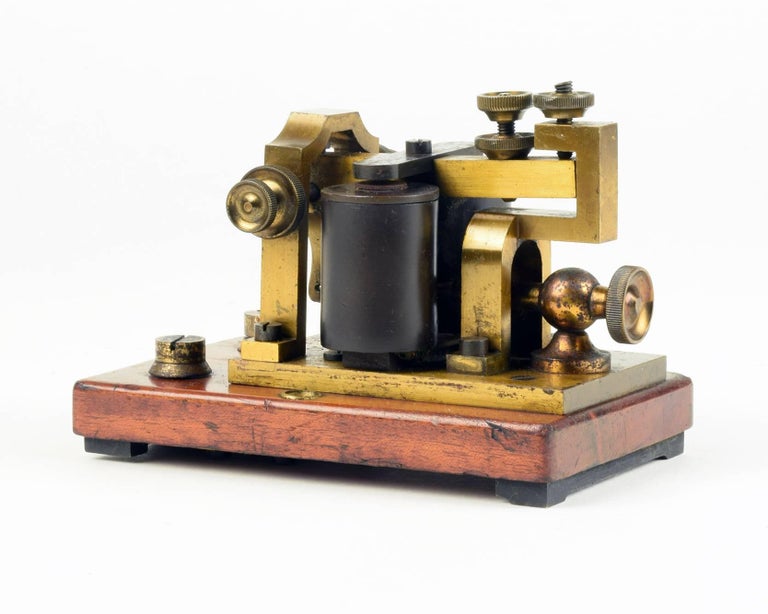Morse : ?Telegraph Signs?
| Michael Gilligan | 10/05/2021 16:00:20 |
23121 forum posts 1360 photos | I’ve just stumbled across this patent, which may be of interest: **LINK** https://worldwide.espacenet.com/patent/search?q=pn%3DUS1647A [ as usual, the column of three dots at upper-right of the linked page gives access to a download ] MichaelG. . Edit: __ there are quite a few related patents revealed by searching Espacenet with: wheel AND gravity AND electro and listing the results in date order.
Edited By Michael Gilligan on 10/05/2021 16:11:39 |
| ega | 11/05/2021 22:10:12 |
| 2805 forum posts 219 photos | Thank you! Bang on my current area of interest. |
| Michael Gilligan | 11/05/2021 22:14:39 |
23121 forum posts 1360 photos | Thank you, ega ... I thought no-one else was remotely interested. MichaelG. |
| Bazyle | 12/05/2021 00:08:04 |
6956 forum posts 229 photos | I missed this post yesterday. Interesting to see they used the form of words "electric or galvanic" showing that the common usage of the term for electricity was not yet firmly settled. |
| SillyOldDuffer | 12/05/2021 10:15:37 |
| 10668 forum posts 2415 photos | I'm interested but was interrupted, AGAIN. My time isn't my own! The patent shows the original Morse Code, in which messages were typeset in a form, and sent by running a key along the line of indented slugs. At the other end the undulating signal was inked on paper tape and then decoded by eye. Not much skill required of the operators but desperately slow! Morse code owes much more to Alfred Vail than Samuel Morse. Morse deserves full credit for the business side, but the technology was developed for him by Professor Henry (of Inductance fame), and Alfred Vail, who invented the Morse Key, radically improved the code, and was responsible for the practical details. Vail's idea of sending Morse with a hand key rather than a form worked well, but an unexpected development was operators learning to decode Morse by listening to clicks made by the inker; they could write messages down directly. Much quicker, but skilled work. The media usually gets historic Morse Code wrong by representing it with the pure audio tones developed much later by radio-telegraphy. Landline telegraphy was composed entirely of clicks; click-click being a dot, and click...click being a dash. Early wireless was clicky too but improvements over 30 years led via a noise like tearing Calico to audio tones. The Titanic's distress signal would have sounded like ripping cloth. Accept no substitutes! Vail's version of Morse Code, called 'American Morse' was further improved by Friedrich Gueke in 1848, and with minor modifications this is the version we are familiar with today. E,H,K and N are the only survivors of the code shown in Michael's Patent. I'm surprised more Model Engineers aren't into replicating early telegraph instruments. Lots of shiny retro brass, interesting movements, precision metalwork and intriguing noises.
Hours of fun... Dave |
Please login to post a reply.
Want the latest issue of Model Engineer or Model Engineers' Workshop? Use our magazine locator links to find your nearest stockist!
Sign up to our newsletter and get a free digital issue.
You can unsubscribe at anytime. View our privacy policy at www.mortons.co.uk/privacy
- *Oct 2023: FORUM MIGRATION TIMELINE*
05/10/2023 07:57:11 - Making ER11 collet chuck
05/10/2023 07:56:24 - What did you do today? 2023
05/10/2023 07:25:01 - Orrery
05/10/2023 06:00:41 - Wera hand-tools
05/10/2023 05:47:07 - New member
05/10/2023 04:40:11 - Problems with external pot on at1 vfd
05/10/2023 00:06:32 - Drain plug
04/10/2023 23:36:17 - digi phase converter for 10 machines.....
04/10/2023 23:13:48 - Winter Storage Of Locomotives
04/10/2023 21:02:11 - More Latest Posts...
- View All Topics
- Reeves** - Rebuilt Royal Scot by Martin Evans
by John Broughton
£300.00 - BRITANNIA 5" GAUGE James Perrier
by Jon Seabright 1
£2,500.00 - Drill Grinder - for restoration
by Nigel Graham 2
£0.00 - WARCO WM18 MILLING MACHINE
by Alex Chudley
£1,200.00 - MYFORD SUPER 7 LATHE
by Alex Chudley
£2,000.00 - More "For Sale" Ads...
- D1-3 backplate
by Michael Horley
Price Not Specified - fixed steady for a Colchester bantam mark1 800
by George Jervis
Price Not Specified - lbsc pansy
by JACK SIDEBOTHAM
Price Not Specified - Pratt Burnerd multifit chuck key.
by Tim Riome
Price Not Specified - BANDSAW BLADE WELDER
by HUGH
Price Not Specified - More "Wanted" Ads...
Do you want to contact the Model Engineer and Model Engineers' Workshop team?
You can contact us by phone, mail or email about the magazines including becoming a contributor, submitting reader's letters or making queries about articles. You can also get in touch about this website, advertising or other general issues.
Click THIS LINK for full contact details.
For subscription issues please see THIS LINK.
Model Engineer Magazine
- Percival Marshall
- M.E. History
- LittleLEC
- M.E. Clock
ME Workshop
- An Adcock
- & Shipley
- Horizontal
- Mill
Subscribe Now
- Great savings
- Delivered to your door
Pre-order your copy!
- Delivered to your doorstep!
- Free UK delivery!















 Register
Register Log-in
Log-in


